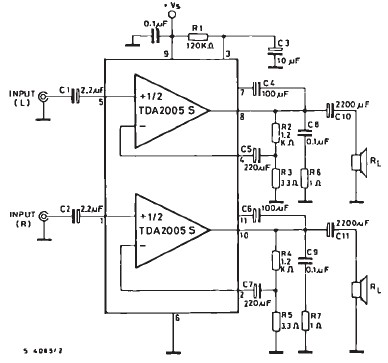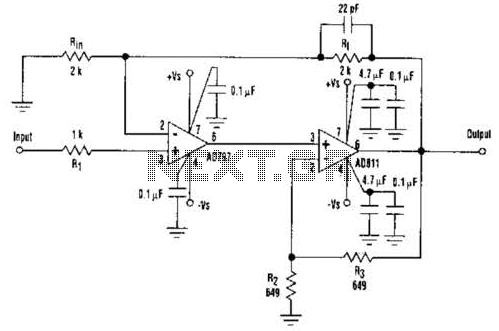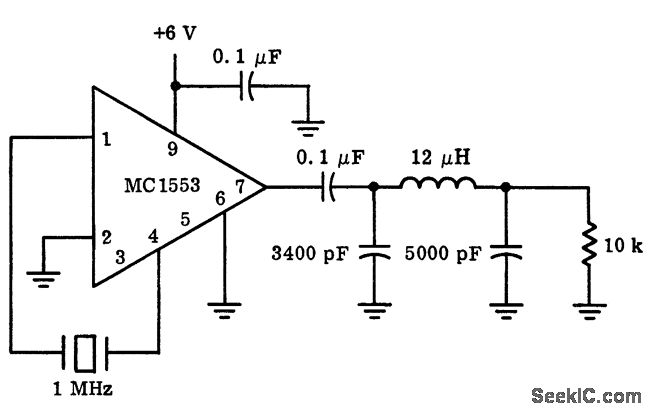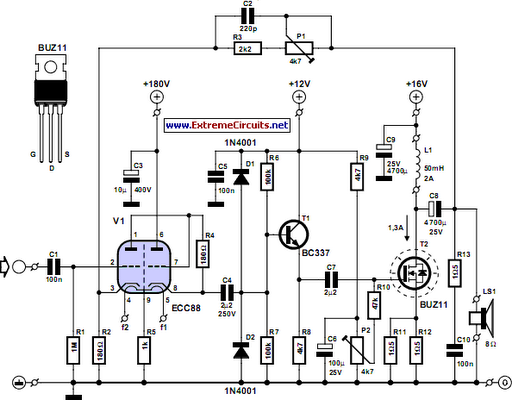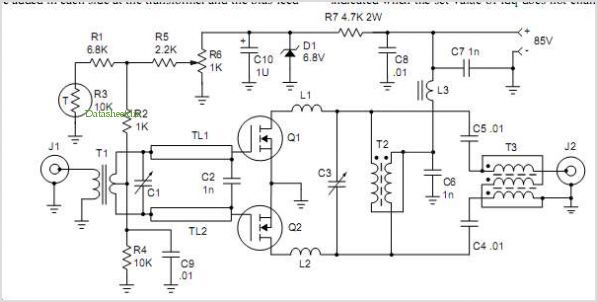
Power amplifier 60W/8
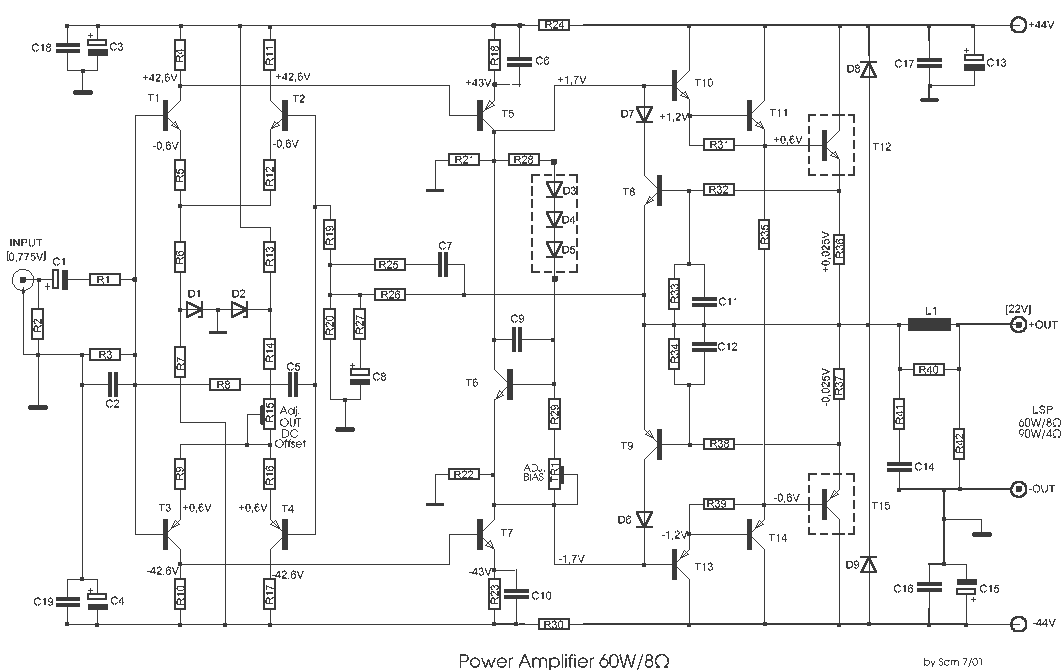
This circuit was designed and manufactured in the 1980s and has functioned without issues since then. It does not present any particular constructional problem, beyond the known: the attention in the provided force of power supply, choice of suitable heatsink, and good matching of drivers transistor. Diodes D35 should be placed above in heatsink of the power transistors, so that they have thermic coupling with the output transistors.
Additional Content: The circuit's design is relatively straightforward, reflecting the electronic engineering principles of the 1980s. It has been constructed with meticulous attention to detail, particularly in terms of its power supply force. This aspect is critical for the circuit's operation, as it ensures that the circuit can handle the electrical load efficiently, preventing overheating and potential damage.
The choice of a suitable heatsink is another key aspect of this circuit. The heatsink is responsible for dissipating the heat generated by the circuit during operation. It is crucial to select a heatsink with the right thermal characteristics to maintain the circuit's temperature within safe operating limits.
In this circuit, the drivers transistor has been carefully matched. This is an important step as it ensures that the transistors operate in sync, providing consistent performance and preventing the possibility of circuit failure due to mismatched transistors.
The placement of diodes D35 is also noteworthy. They are positioned above the heatsink of the power transistors, allowing for thermic coupling with the output transistors. This configuration promotes efficient heat transfer, ensuring that the diodes and transistors operate at the same temperature. This thermal coupling can enhance the circuit's overall performance by reducing thermal drift, improving the stability of the circuit's operation.
In conclusion, this circuit is a testament to the robust electronic design principles of the 1980s. Its dependable performance over the years underlines the importance of meticulous design, careful component selection, and thoughtful construction.This circuit was designed and manufactured the `80`s. From then it works without problem. It does not present any particular constructional problem, beyond known: the attention in the provided force of power supply - choice suitable heatsink and good matching of drivers transistor. Diodes D35 should be placed above in heatsink of the power transistors, so that they have thermic coupling with the output transistors.
🔗 External reference
Additional Content: The circuit's design is relatively straightforward, reflecting the electronic engineering principles of the 1980s. It has been constructed with meticulous attention to detail, particularly in terms of its power supply force. This aspect is critical for the circuit's operation, as it ensures that the circuit can handle the electrical load efficiently, preventing overheating and potential damage.
The choice of a suitable heatsink is another key aspect of this circuit. The heatsink is responsible for dissipating the heat generated by the circuit during operation. It is crucial to select a heatsink with the right thermal characteristics to maintain the circuit's temperature within safe operating limits.
In this circuit, the drivers transistor has been carefully matched. This is an important step as it ensures that the transistors operate in sync, providing consistent performance and preventing the possibility of circuit failure due to mismatched transistors.
The placement of diodes D35 is also noteworthy. They are positioned above the heatsink of the power transistors, allowing for thermic coupling with the output transistors. This configuration promotes efficient heat transfer, ensuring that the diodes and transistors operate at the same temperature. This thermal coupling can enhance the circuit's overall performance by reducing thermal drift, improving the stability of the circuit's operation.
In conclusion, this circuit is a testament to the robust electronic design principles of the 1980s. Its dependable performance over the years underlines the importance of meticulous design, careful component selection, and thoughtful construction.This circuit was designed and manufactured the `80`s. From then it works without problem. It does not present any particular constructional problem, beyond known: the attention in the provided force of power supply - choice suitable heatsink and good matching of drivers transistor. Diodes D35 should be placed above in heatsink of the power transistors, so that they have thermic coupling with the output transistors.
🔗 External reference
